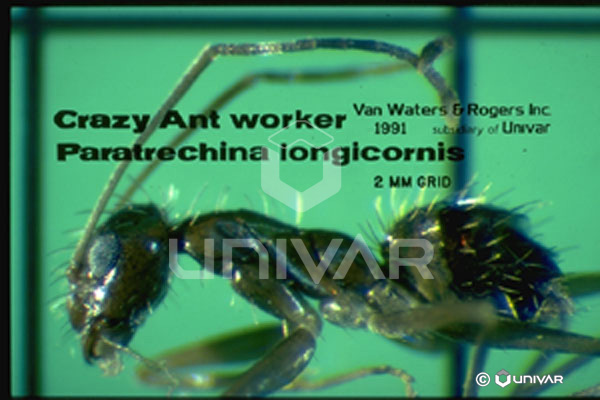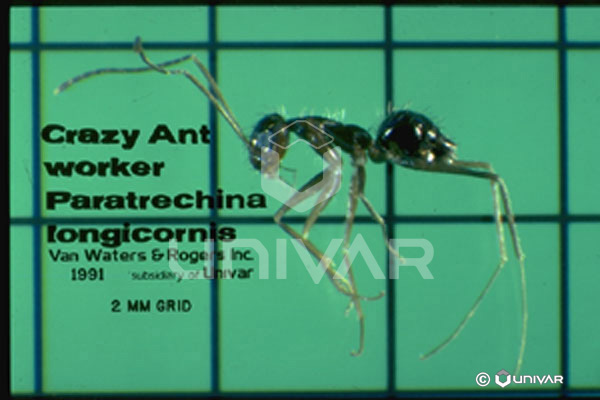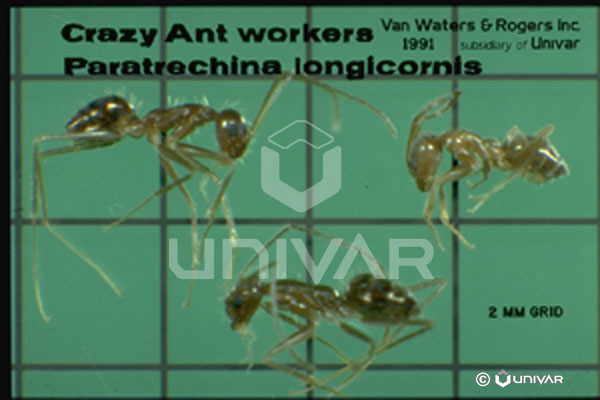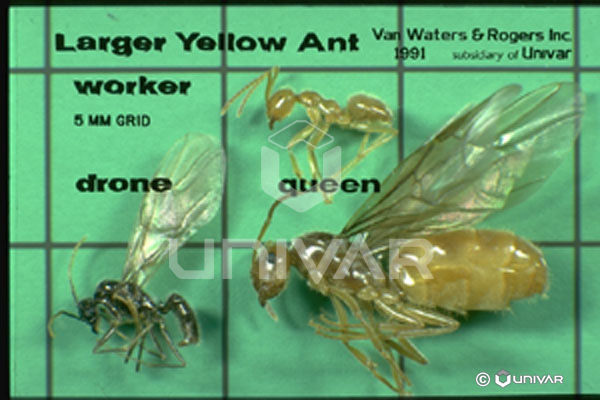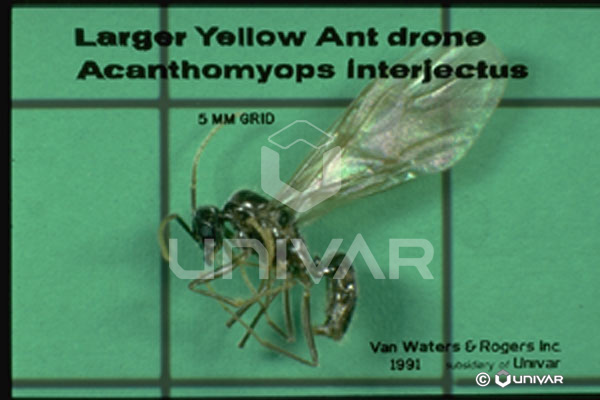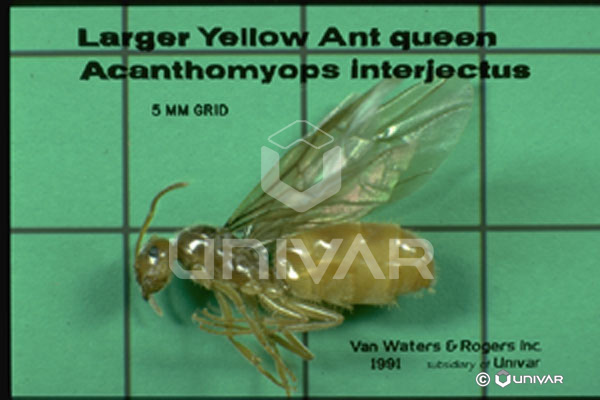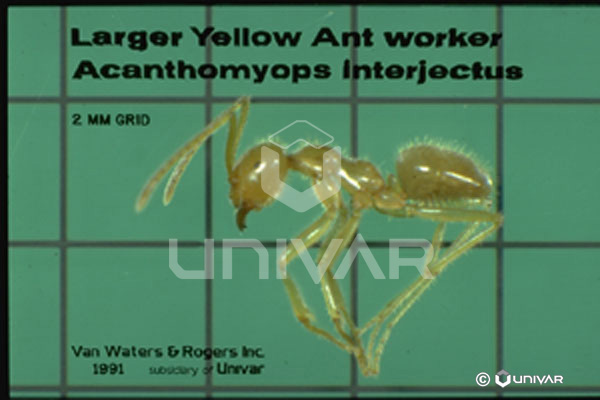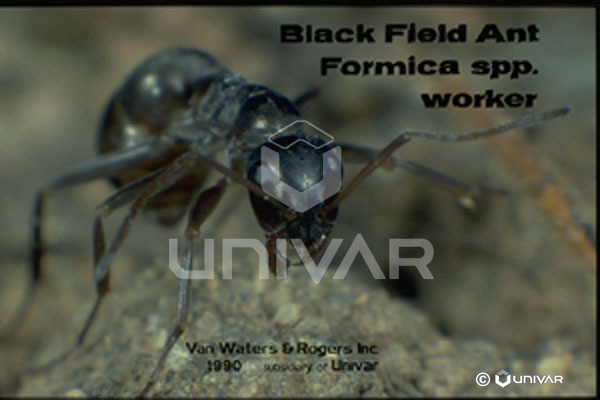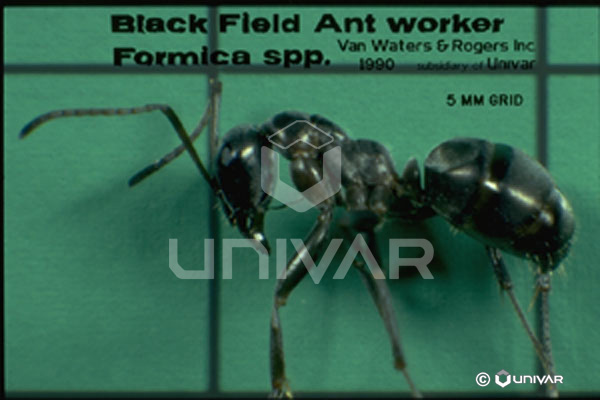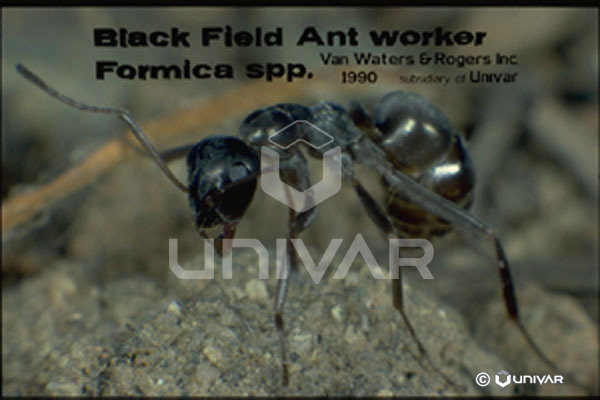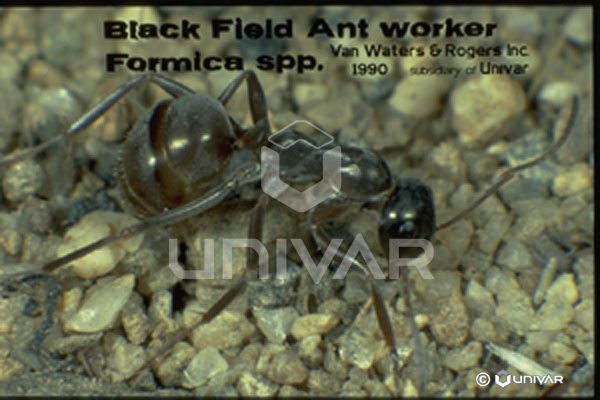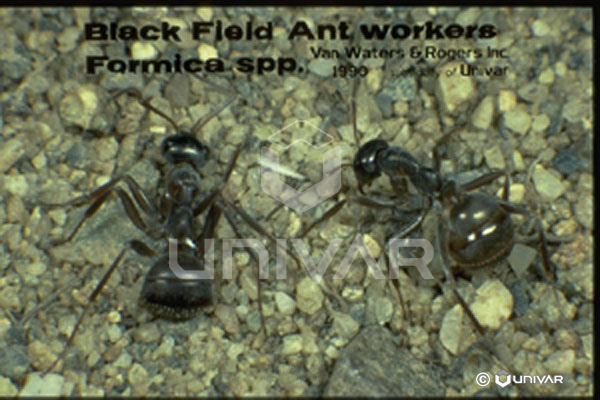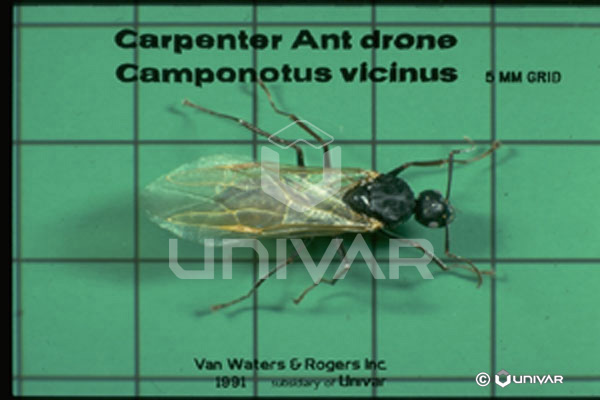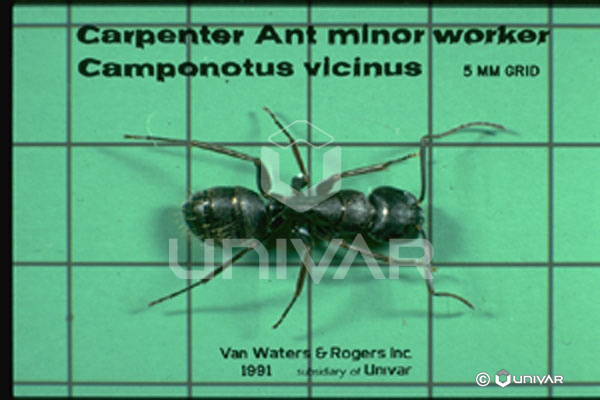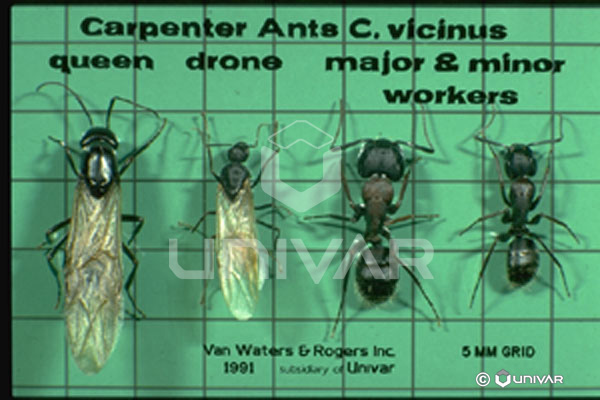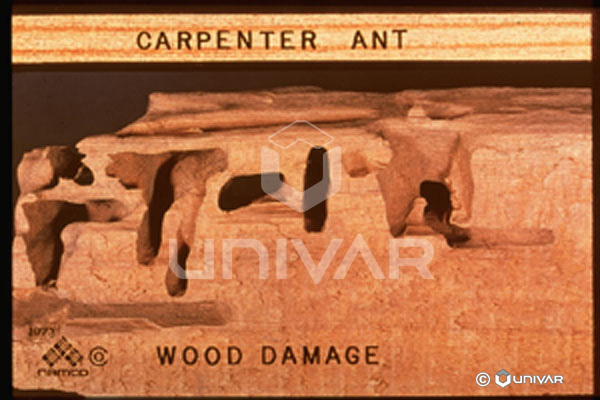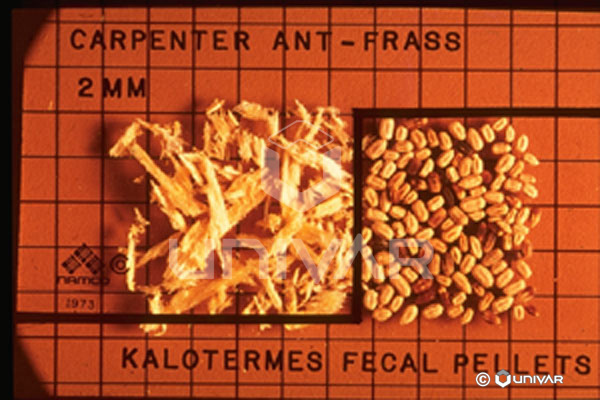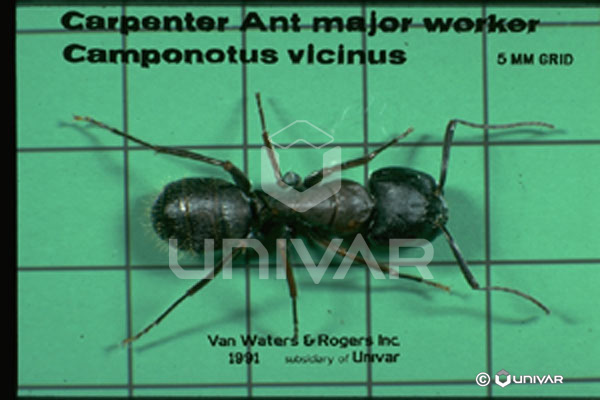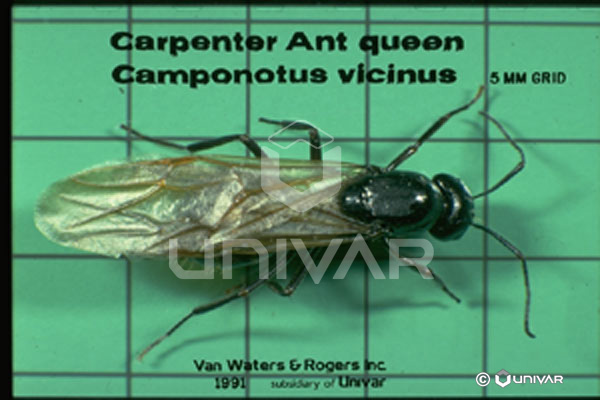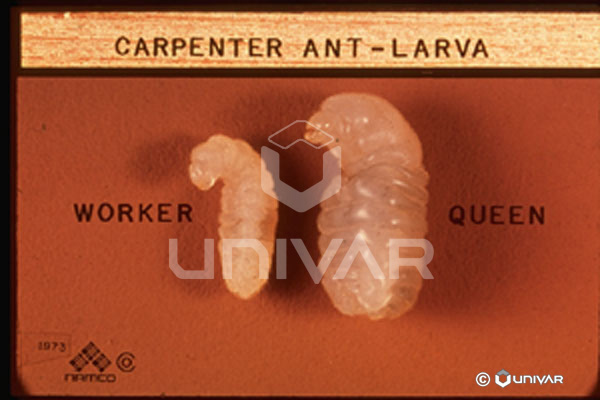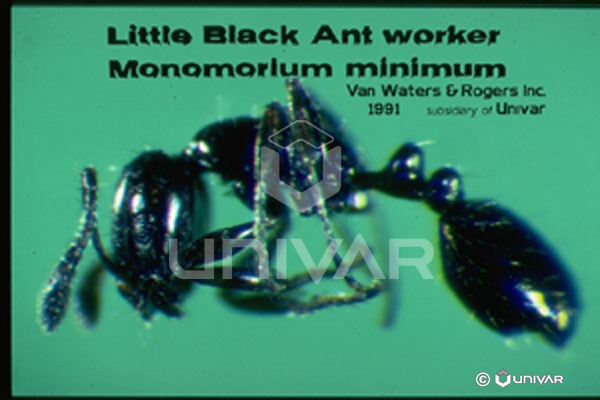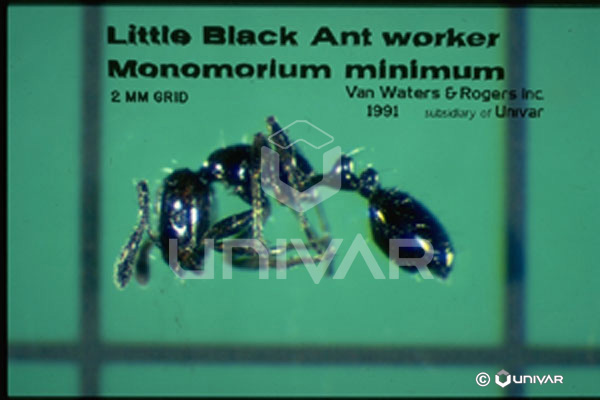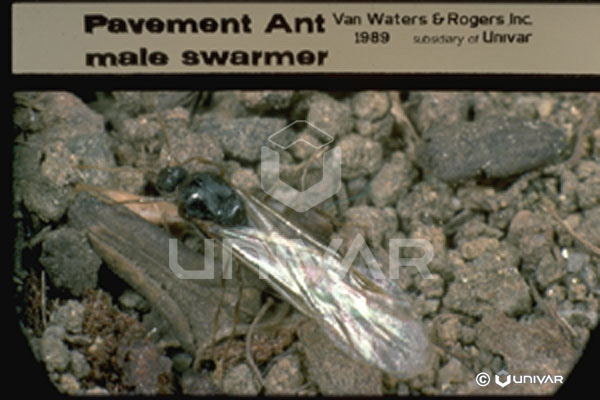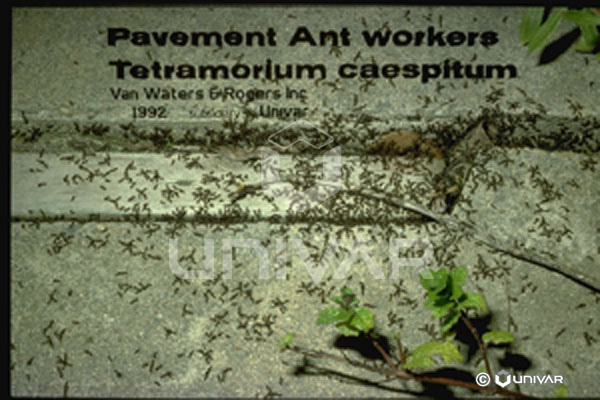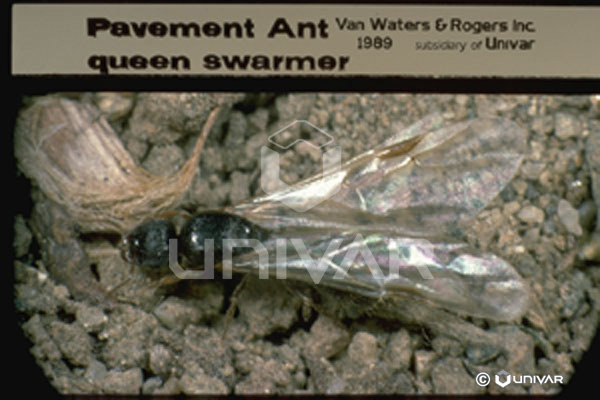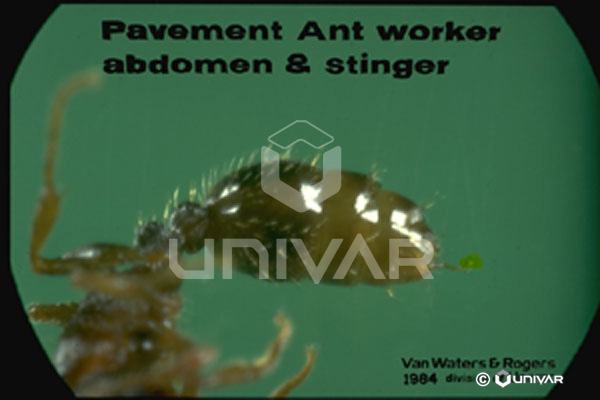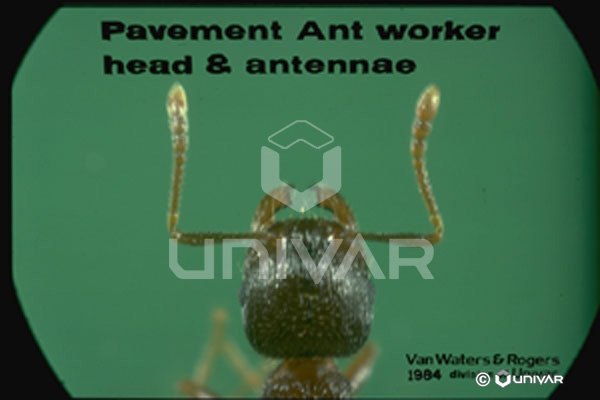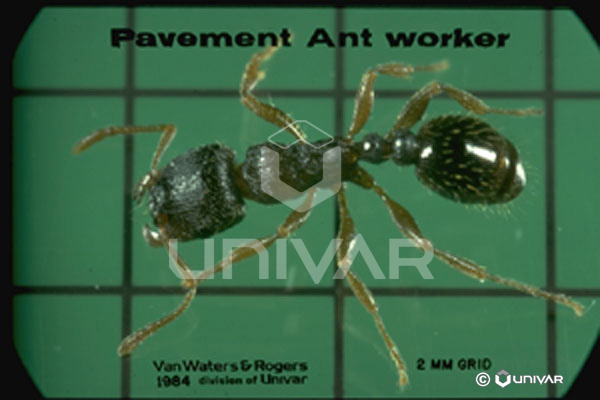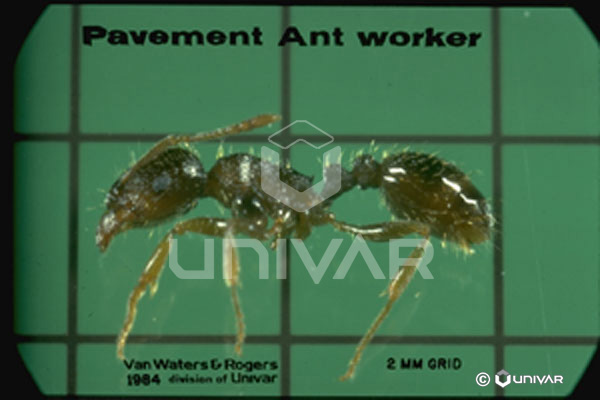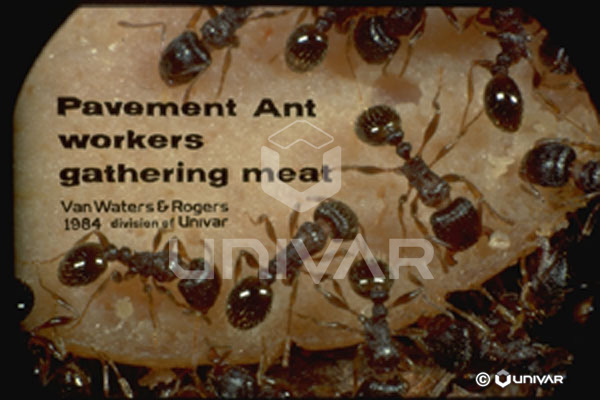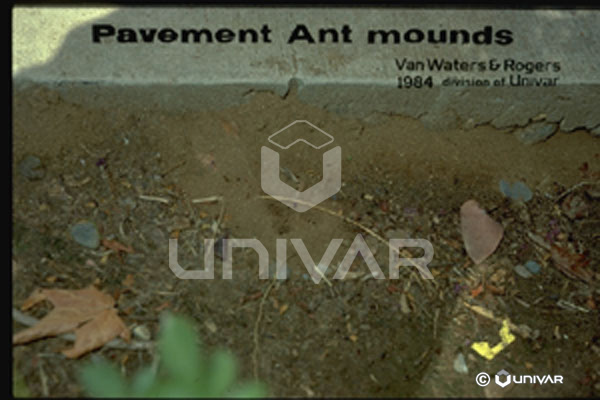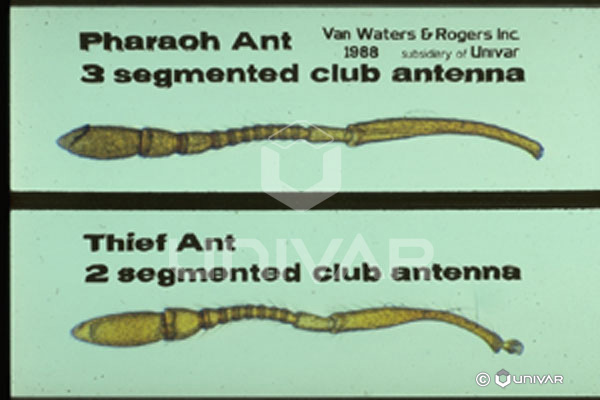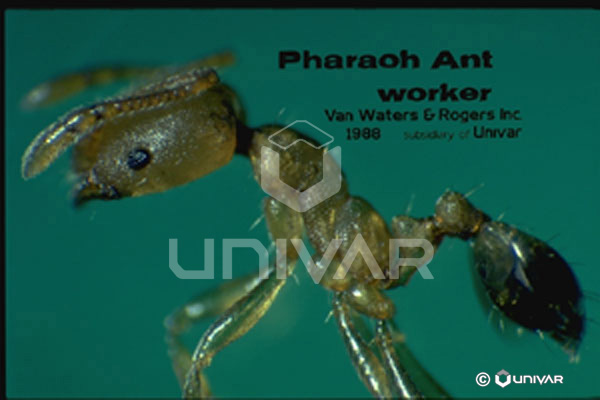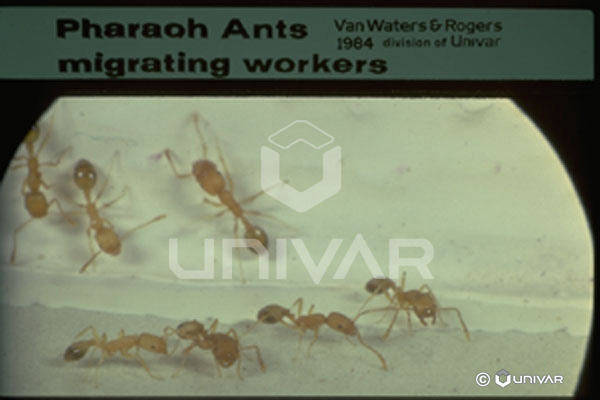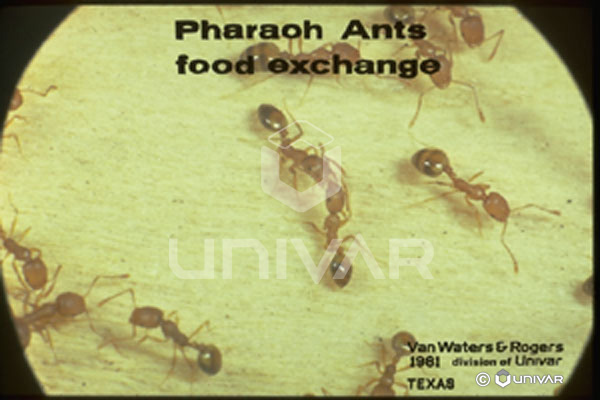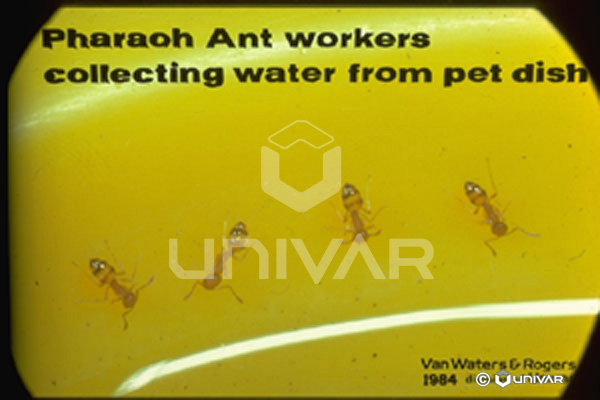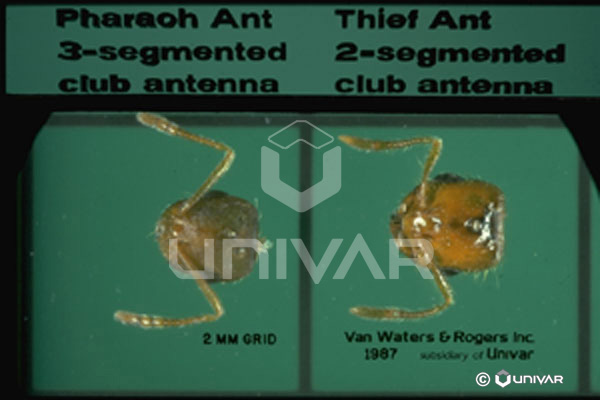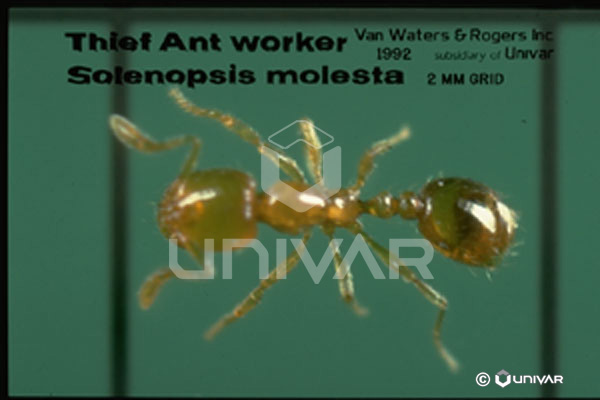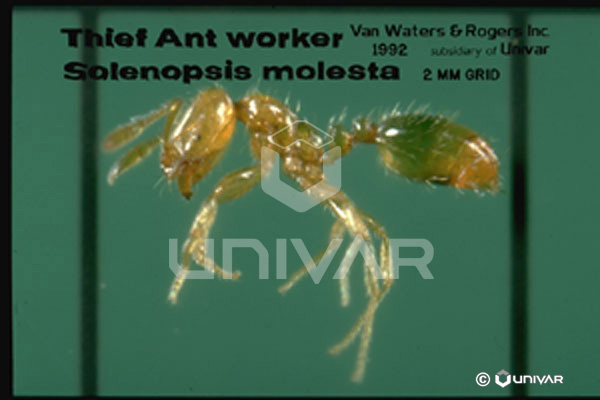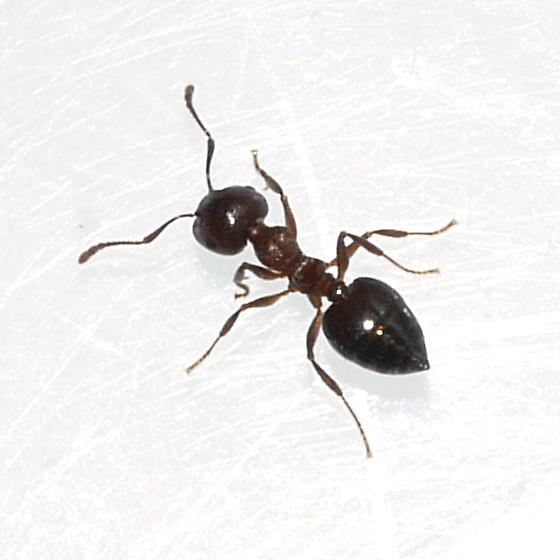
ACROBAT ANT
Common Name: Ant – Acrobat ant
Latin Name: Crematogaster
Common Family Name: Ants
Latin Family Name: Formicidae
Other Names:
Origin: Several species are native to North America, and they can be found throughout the United States.
Biology: The common name is derived from the habit of the workers in which they arch their abdomen over their thorax when they are agitated. Nests may be found in almost any circumstance. Outdoors they commonly will be within wooden materials such as stumps, hollow trees, or firewood, as well as under yard debris or other materials on the soil. Indoors they may nest in voids in walls or ceilings, in old termite or carpenter ant nests in wood, or within soft materials such as foam insulation, which they hollow out themselves. Moisture will be an added draw for Acrobat ants. Colonies generally are medium-sized, with several hundred workers. Foods consist of a wide variety of live or dead insects as well as sweet materials. Honeydew is a preferred food in an outdoor setting, and the ants may even create shields of plant material over the insects that produce the honeydew, protecting them from other predators.
Identification: This is a double-node ant that is capable of stinging. The key identifying characters are with the abdomen. When viewed from above it is distinctly heart-shaped, and the pedicel (the thin waist) attaches to the top of the front of the abdomen. There is a pair of spines on the top of the metathorax, and colors range from light brown to almost black, depending on the species.
Characteristics Important in Control: Control of most ants includes correction of the attractions that drew them to a property, including harborage sites, food sources, and moisture conditions. Elimination of insects that provide protein or honeydew sources reduces ant foraging in an area, very important for this species. Ant bait products in granular, liquid, or gel formulations can be effective, and carbohydrate baits may be preferred. When the ants are nesting within a structure the nest needs to be located and treated directly, with residual dust insecticides very effective. Trimming back shrubs and tree limbs that touch the structure will reduce the movement of these ants indoors.
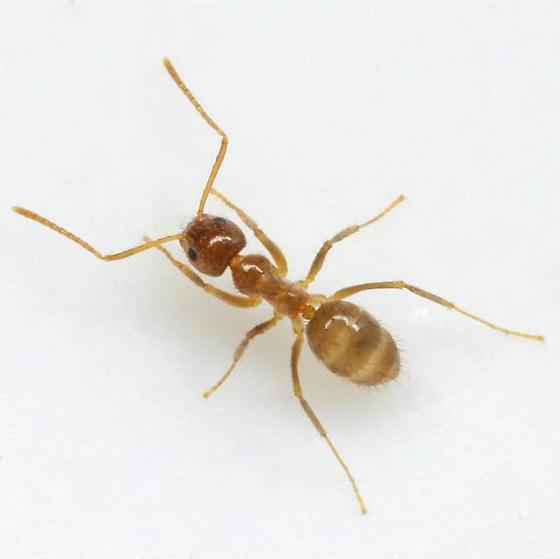
CRAZY ANT
Common Name: Ant – Crazy ant
Latin Name: Paratrechina longicornis
Common Family Name: Ants
Latin Family Name: Formicidae
Other Names:
Origin: Believed to be native to India, but now found throughout the world. It is most common in the U.S. from Florida to Texas along the Gulf Coast, but also occurs in other states from California to New York, as well as in Hawaii.
Biology: This is a single-node ant whose common name comes from their habit of running around erratically, with no apparent purpose. Their extremely long legs and antennae tend to accentuate this behavior. Nests may be established in a wide variety of situations, from wet to dry habitats, in the soil under other objects, in tree holes, under mulch, in potted plant soils, or in other odd cavities they find. Within structures, they nest in wall voids or under objects that are not moved for some time. Their foods range from proteins to sugars, and they will tend to aphids for honeydew. They also are excellent predators, feeding on the larvae or adults of many other insects, including fleas, flies, and fire ant swarmers. The colony of the Crazy Ant may have numerous queens and new colonies are often established by budding. Colonies commonly contain only 1000 to 2000 workers but may have up to 40 queens. This is a monomorphic species where all the workers are the same size.
Identification: Workers are small, and dark brown to black. There is a single node and the legs and antennae are extremely long about the rest of the body. The antennae have 12 segments, no club at the end, and the long basal segment is nearly twice the length of the head. There is a small circle of hairs surrounding the anal opening.
Characteristics Important in Control: Control of most ants includes correction of the attractions that drew them to a property, including harborage sites, food sources, and moisture conditions. Elimination of insects that provide protein or honeydew sources reduces ant foraging in an area, and cleanup of unnecessary debris or objects on the soil that provide harborage eliminates nesting. Application of residual dust insecticides into structural voids and application of a residual insecticide spray along foundation perimeters will help to kill trailing ants. Ant bait products in granular, liquid, or gel formulations can be highly effective if the ants accept the bait. If the ant colony can be found it can be treated directly with a dust or liquid insecticide.
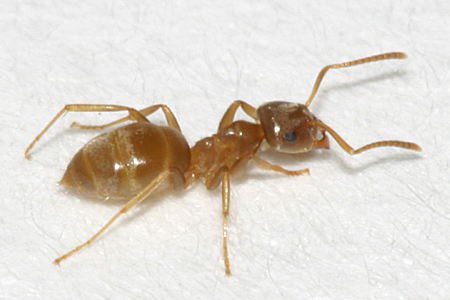
CITRONELLA ANT
Common Name: Ant – Large yellow ant
Latin Name: Acanthomyops interjectus
Common Family Name: Ants
Latin Family Name: Formicidae
Other Names: Citronella ant
Origin: Native to North America, and common from the east coast states west to Washington and throughout the Midwest.
Biology: This is a single-node ant with workers as large as 5 mm. When crushed it has a lemony or “citronella-like” odor, giving it one of its names. Food is almost entirely sugary materials such as honeydew from plant-feeding insects. Nests are in the soil, sometimes under logs or concrete slabs, and winged swarmers may enter the structure due to these nests below the slab.
Identification: The light yellow color and large size make these ants fairly distinct. There is a single node, and the antennae have 12 segments with the first long segment shorter than the head, and the antennae gradually taper to an enlarged end. The top of the thorax has a distinct dip in it when viewed from the side. There is a small circle of hairs around the anal opening.
Characteristics Important in Control: This soil-nesting ant is best controlled by locating the nest and treating directly into it. Baits are not normally accepted, as the workers tend to restrict their foraging to natural food sources. Elimination of objects on the soil that are not needed will reduce the nesting site opportunities for this ant.
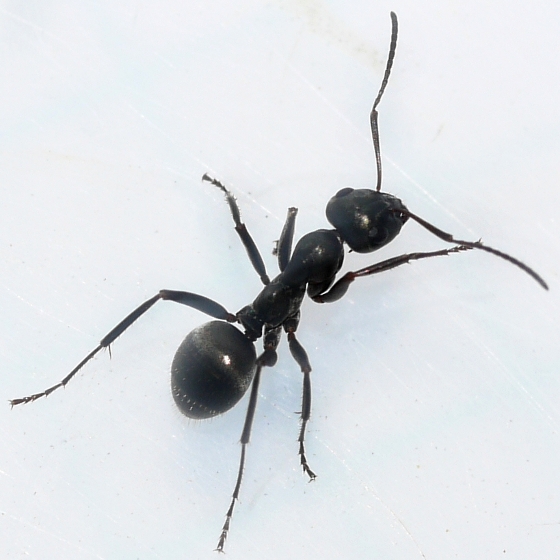
BLACK FIELD ANT
Common Name: Ant – Field ant
Latin Name: Formica
Common Family Name: Ants
Latin Family Name: Formicidae
Other Names: Thatch ant, mound ant, silky ant
Origin: Many species in this genus are native to North America, and are found commonly throughout the continent.
Biology: These are fairly large, single-node species, with colors ranging from black to brown to reddish, or combinations of these colors. They rarely invade structures but are common in wooded or grassy areas outdoors. They cannot sting, but they will readily bite to cause a slight opening in the skin, and then spray formic acid onto the bite wound to cause a stinging sensation. Their common names are derived from their habit of creating large above-ground mounds of vegetation with their colony nesting inside. The field ants are particularly fond of sweet materials and will forage for honeydew. However, they also are fierce predators of other insects
Identification: The species of Formica are very similar to carpenter ants, in color and size. However, unlike the evenly rounded profile to the top of the thorax on carpenter ants, field ants have a deep depression on the posterior half of the thorax. They have a single, prominent node on the petiole and a circle of hairs around the anal opening. The antennae have 12 segments and the first long segment is usually shorter than the height of the head. 3 distinct ocelli are forming a triangle on the head between the eyes.
Characteristics Important in Control: Control of most ants includes correction of the attractions that drew them to a property, including harborage sites, food sources, and moisture conditions. Elimination of insects that provide protein or honeydew sources reduces ant foraging in an area, very important for this species, and cleanup of unnecessary debris or objects on the soil that provide harborage eliminates nesting. Ant bait products in granular, liquid, or gel formulations can be highly effective if the ants accept the bait. If the visible mounds of this species can be found it can be treated directly with a dust or liquid insecticide.
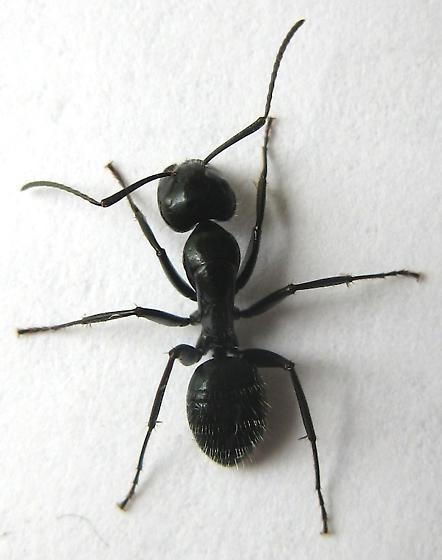
CARPENTER ANT
Common Name: Ant – Carpenter ant
Latin Name: Camponotus
Common Family Name: Ants
Latin Family Name: Formicidae
Other Names:
Origin: Many species of these ants are native to North America, with several species seemingly the most likely to invade structural wood members. There are many destructive species in the Pacific Northwest states, as well as from Florida to the northeast to the southwest and in Hawaii.
Biology: The usual habitat of a colony of carpenter ants is within wood, often wood-buried or partially buried in the soil. They also commonly establish “satellite” colonies that may be in a structure, maintaining contact between the two colonies with the workers who travel to and from well-defined trails. Generally, there is a single queen in the colony but often supplementary queens as well. Colonies typically have around 15,000 workers when mature, but potentially could be over 100,000 workers. Foods are both carbohydrates and protein, with insects a major part of the diet. These are single-node ants without a stinger, although they are capable of biting. As they expand their colony they eject “frass”, which is wood chips and other debris such as leftover insect parts. This frass is often seen in structures before the ants are, as they are primarily nocturnal in habit. Carpenter ants are also typically polymorphic, with various sizes of workers in the colony.
Identification: Worker ants are easily identified to the genus Camponotus by the single, large node and the evenly rounded profile of the top of the thorax. It has no dips or spines on it, but is an even, curved line from front to back. There is a circular fringe of hairs around the anal opening and the antennae have 12 segments. Colors range from tan to black to reddish to orange to black/red combinations. Workers vary from 6 to 13 mm in length.
Characteristics Important in Control: Finding and treating directly into the nest with a residual insecticide will result in the effective killing of the ants there, and a dust insecticide may be most effective. Satellite colonies in structures may be treated directly, or with applications into voids the ants travel through. Bait products seem to be accepted readily as well. Reduction of excessive moisture in the structure and removal of unnecessary wood materials outdoors will reduce the attraction of an area.
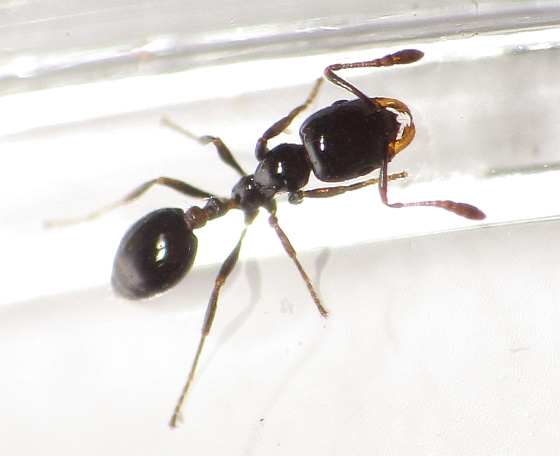
LITTLE BLACK ANT
Common Name: Ant – Little black ant
Latin Name: Monomorium minimum
Common Family Name: Ants
Latin Family Name: Formicidae
Other Names:
Origin: Possibly a native of the United States, where it is found most commonly in the eastern half, but frequently in California as well.
Biology: When found outdoors this ant nests primarily in the soil under debris or other objects, as well as in open areas and in turf. The nest opening will have a small crater of soil around it. Less commonly the nests may be found in cavities under bark or other areas, as well as within structures in walls or under carpets. Colonies are small but have numerous queens, and will relocate when they are disturbed. Preferred foods seem to be sugar materials such as honeydew, but they also feed on protein from live or dead insects.
Identification: This ant is one of our smallest, with workers only about 1.5 mm long. It is related to the Pharaoh Ant and is the same size, but is a shiny black color instead of the orange of the Pharaoh Ant. It is a double-node ant and workers are all the same size. The antennae have 12 segments, with the last 3 segments enlarged to form a club.
Characteristics Important in Control: Control of these ants includes correction of the attractions that drew them to a property, including harborage sites, food sources, and moisture conditions. Elimination of insects that provide protein or honeydew sources reduces ant foraging in an area, and cleanup of unnecessary debris or objects on the soil that provide harborage eliminates nesting. Ant bait products in liquid or gel formulations can be highly effective, and carbohydrate formulations may be preferred. The location of the nest sites is important, and when found can be treated directly with a residual dust insecticide.
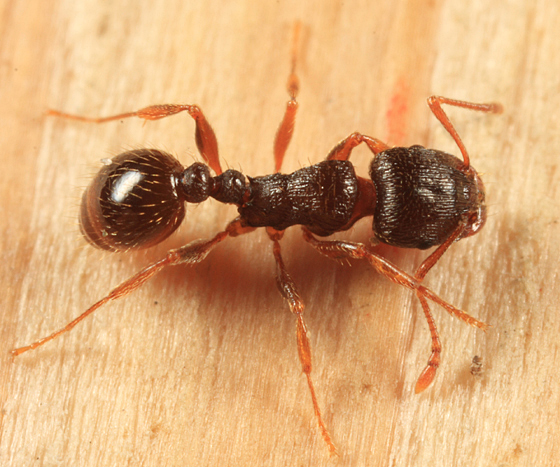
PAVEMENT ANT
Common Name: Ant – Pavement ant
Latin Name: Tetramorium caespitum
Common Family Name: Ants
Latin Family Name: Formicidae
Other Names:
Origin: Believed to originate from either Europe or Asia, but found commonly throughout the east coast states and California, and less commonly in the Midwest.
Biology: The common name of these ants is derived from their habit of creating nests under asphalt or concrete slabs, pushing small mounds of soil out through cracks and expansion joints. The nests are usually very shallow, and may also be found under debris or objects on the ground, as well as within structures near heat sources in the winter. Activity is generally begun at dusk or later, and the workers forage commonly within structures, where they may feed on greases, pet foods, or sweet materials. Outdoors they feed on honeydew, fruits, or other materials. Swarming is most common in the spring, with large numbers emerging from numerous colonies over several days. They are attracted to lights and may find their way indoors at night.
Identification: This is a double-node ant, shiny black, and about 3 mm long. It has a small pair of spines at the back of the thorax and it is capable of stinging, even though the workers are fairly slow-moving. The workers are easily identified using magnification, to see the distinct lines on top of the head, running from front to back. Swarmers often are confused with carpenter ants but are easily separated due to the 2 nodes, rather than a single node as is the case with carpenter ants.
Characteristics Important in Control: Along with the cleanup of potential food sources both inside and outside the structure, pavement ants are easily controlled by locating the colony and applying a residual dust insecticide to it. Colonies are usually very shallow and found by the small mounds of dirt pushed out onto the surface above. Bait products also seem to be accepted by the workers and will be effective.
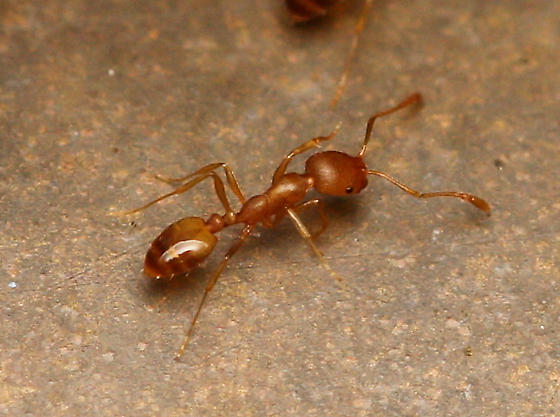
PHARAOH ANT
Common Name: Ant – Pharaoh ant
Latin Name: Monomorium pharaonis
Common Family Name: Ants
Latin Family Name: Formicidae
Other Names:
Origin: It is believed to have originated in Africa but spread to Europe, and from there spread to the United States. It now is found in many parts of the world including the U.S. and Canada, and is a pest in Hawaii. As a tropical species, it is most common in the warmer southern states but inhabits structures in northern areas as well.
Biology: This tiny ant is a huge problem when it inhabits large structures and potentially poses a health threat when nesting within hospitals, where the workers may be found on patients. Their feeding habits expose them to many filthy environments, and this leads to their potential as physical vectors of pathogenic organisms. They have a strong desire for moisture, and foods high in protein are preferred over sugary materials, although they may feed on almost anything. Colonies can be very large, with several hundred thousand workers and many queens, and splitting of the colony is common in response to repellent chemicals. Workers may forage hundreds of feet from their colony, using trails established by pheromones. Nests may be established in almost any suitable void or large crevice, as well as outdoors in the soil under debris or objects on the soil.
Identification: This double-node ant is one of the smallest ant species we deal with, and its light reddish-orange color makes it difficult to see. The abdomen tends to have some black areas as well. It is easily confused with the Thief Ant but is easily separated by having a 12-segmented antenna with the final 3 segments enlarged to form a club. On the Thief Ant, only the final 2 segments are enlarged. Workers are all the same size and are less than 1.5 mm long.
Characteristics Important in Control: Control of Pharaoh ants relies heavily on baiting, using gel or liquid baits of either protein or carbohydrate. The dietary needs of the colony vary, and workers may be seeking only one kind of food, so the use of a variety of bait products will enhance the effectiveness. Chemical sprays should be limited, as these may be detected by foraging workers who then do not return to their nest, but may be able to establish new colonies by themselves. A very thorough inspection must be done to determine where workers are trailing and where the parent nest is likely to be. Moisture control is extremely important for this ant, and the removal of other food sources such as pet foods will enhance control measures.

THIEF ANT
Common Name: Ant – Thief ant
Latin Name: Solenopsis molesta
Common Family Name: Ants
Latin Family Name: Formicidae
Other Names: Piss ant, grease ant
Origin: Not mentioned in literature, but this species is found throughout the United States as a common, indoor ant pest.
Biology: This is a double-node ant, but is far too small to sting. Its name is derived from its ability to enter the nests of other ants and steal and feed on the larvae of these other species. The small size of the Thief Ant allows it to move undetected. They feed on carbohydrates such as honeydew or sugary foods, but are particularly fond of oils and meat, even being found feeding on dead carcasses. A colony may have only a few hundred workers but many queens, and nests both indoors and outdoors can be located in very small cavities, under debris or objects on the soil, behind wall paneling or loose floor molding, and within wall voids or cabinets.
Identification: This tiny ant is less than 1.5 mm long and is such a light orange color that it may be difficult to spot in an inspection. It has no spines on the thorax and has antennae composed of 10 segments. It is easily confused with the Pharaoh Ant in size and color but may be distinguished by the club at the end of the antenna, which is composed of only 2 enlarged segments. On the Pharaoh Ant, this club is made up of 3 enlarged segments, and at least 30X magnification may be necessary to see this character with certainty.
Characteristics Important in Control: Control of these ants includes correction of the attractions that drew them to a property, including harborage sites, food sources, and moisture conditions. Elimination of insects that provide protein or honeydew sources reduces ant foraging in an area, very important for this species, and cleanup of unnecessary debris or objects on the soil that provide harborage eliminates nesting. Ant bait products in liquid or gel formulations can be highly effective, and protein formulations may be preferred. The location of the nest sites is important, and when found can be treated directly with a residual dust insecticide.
